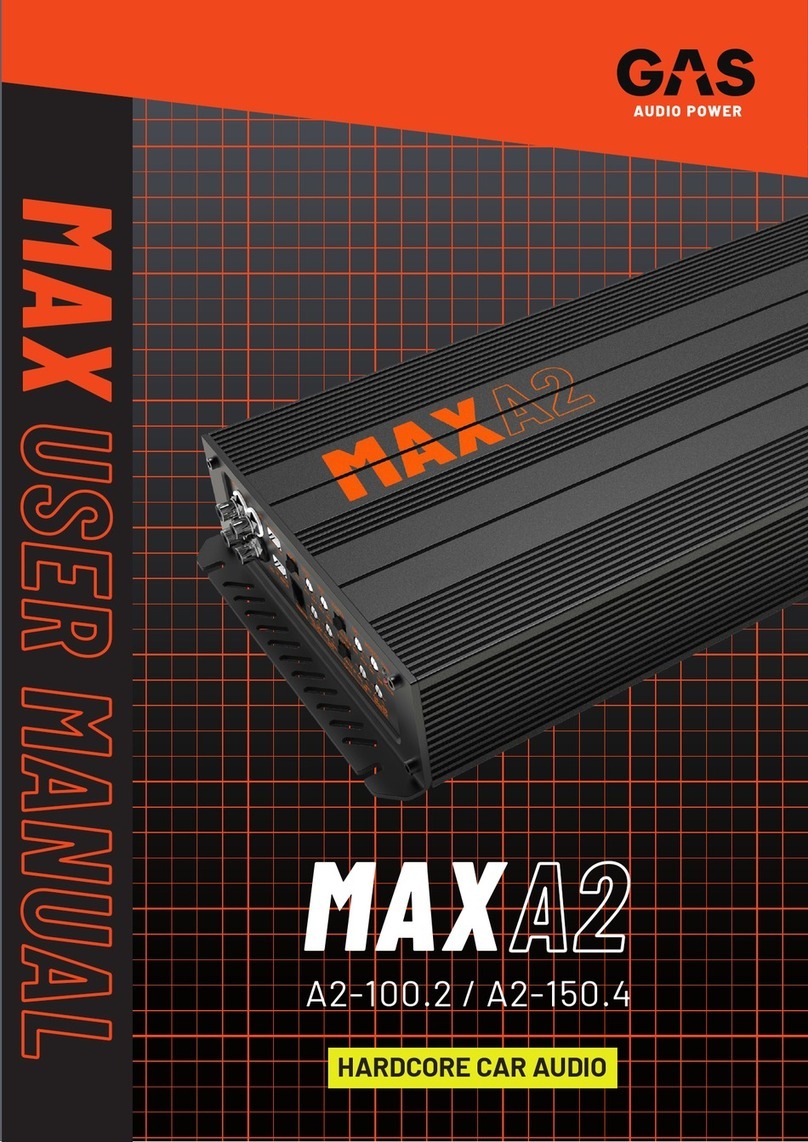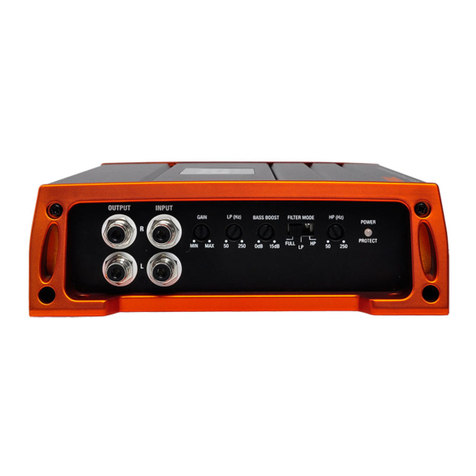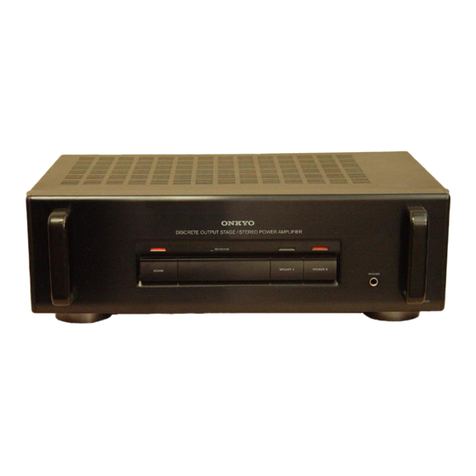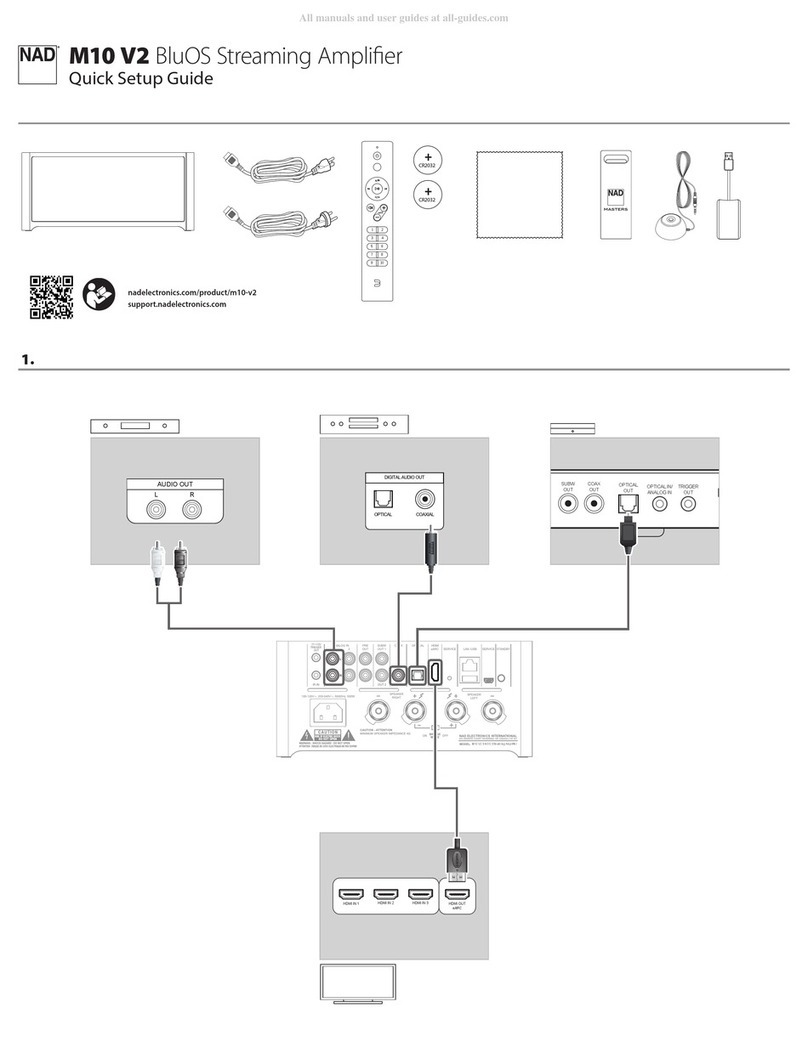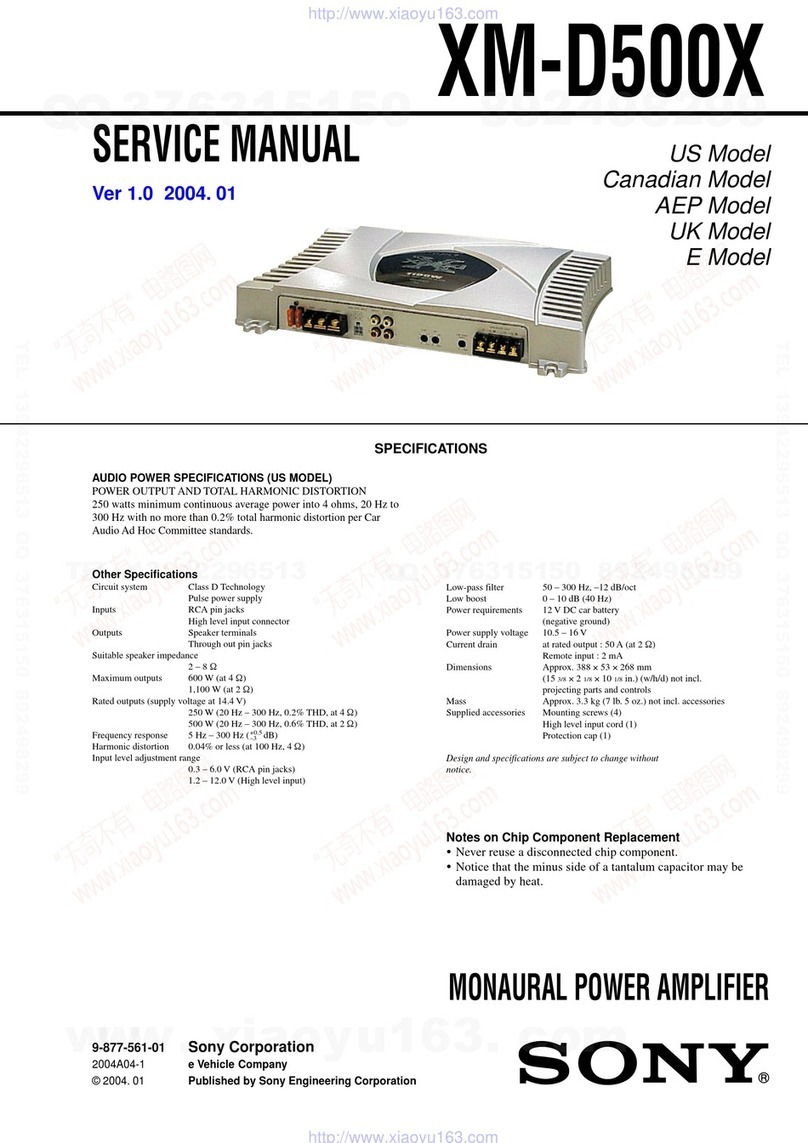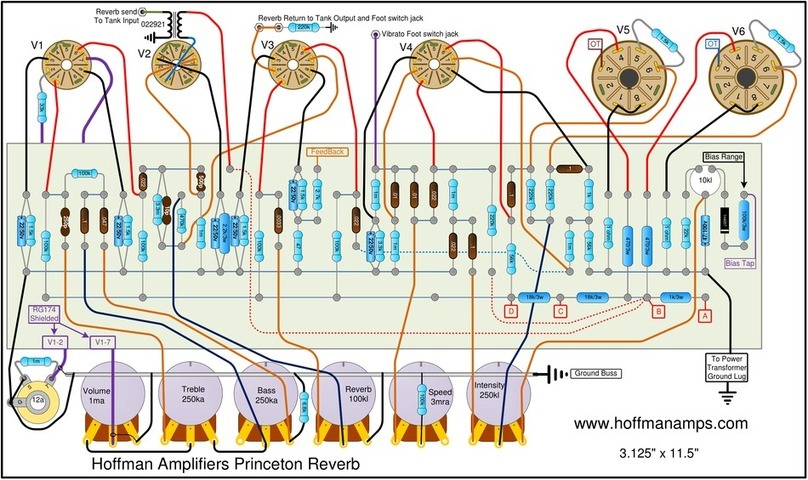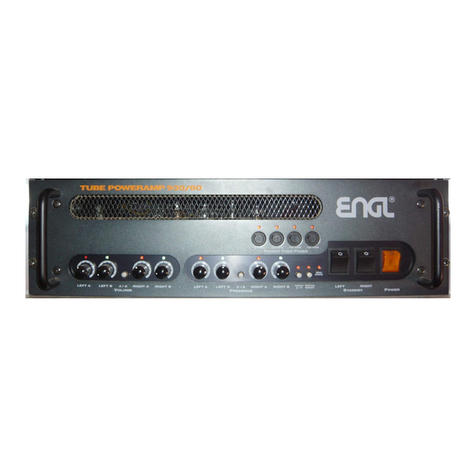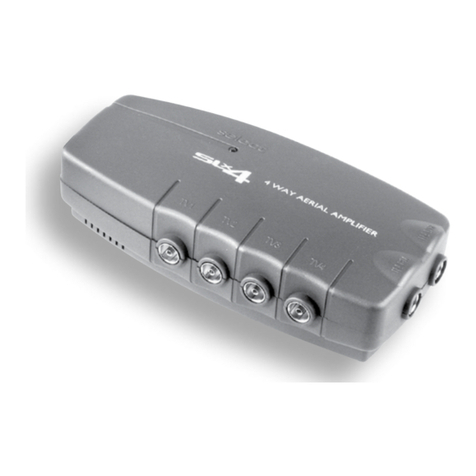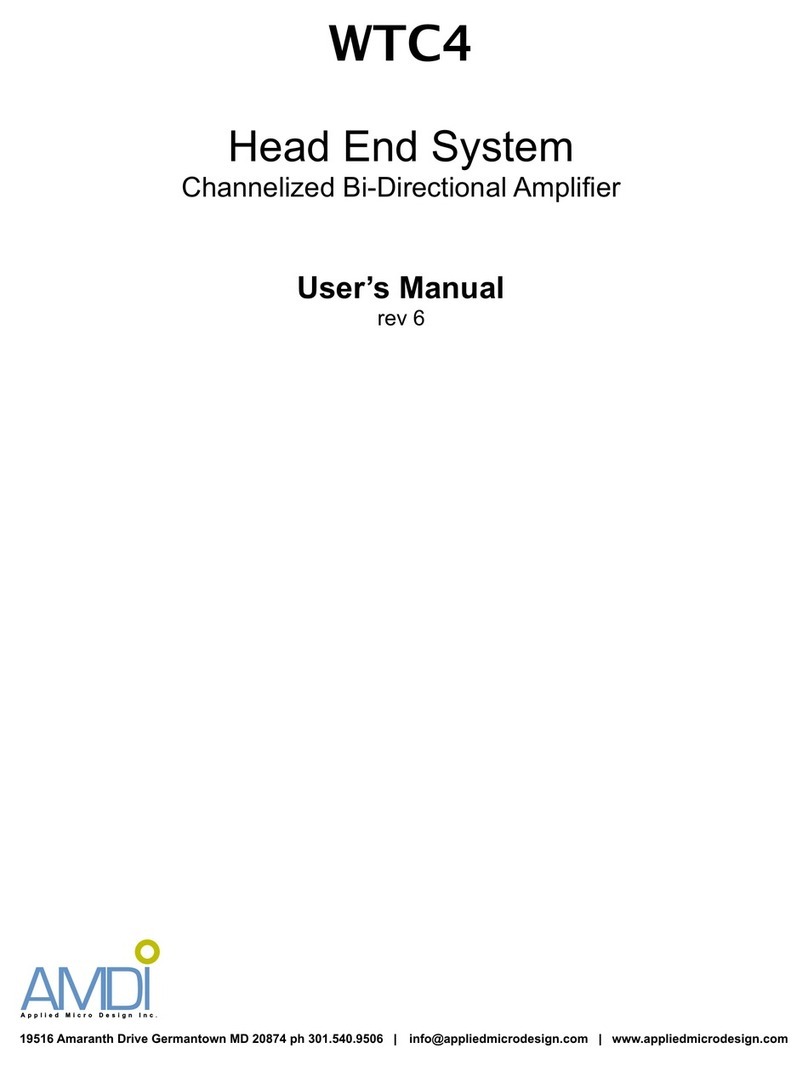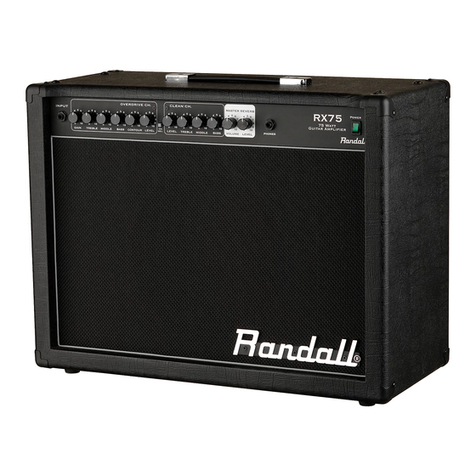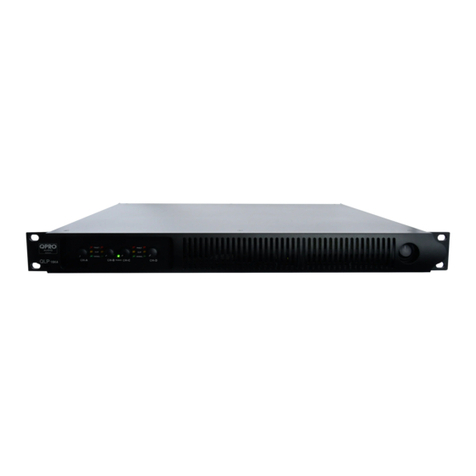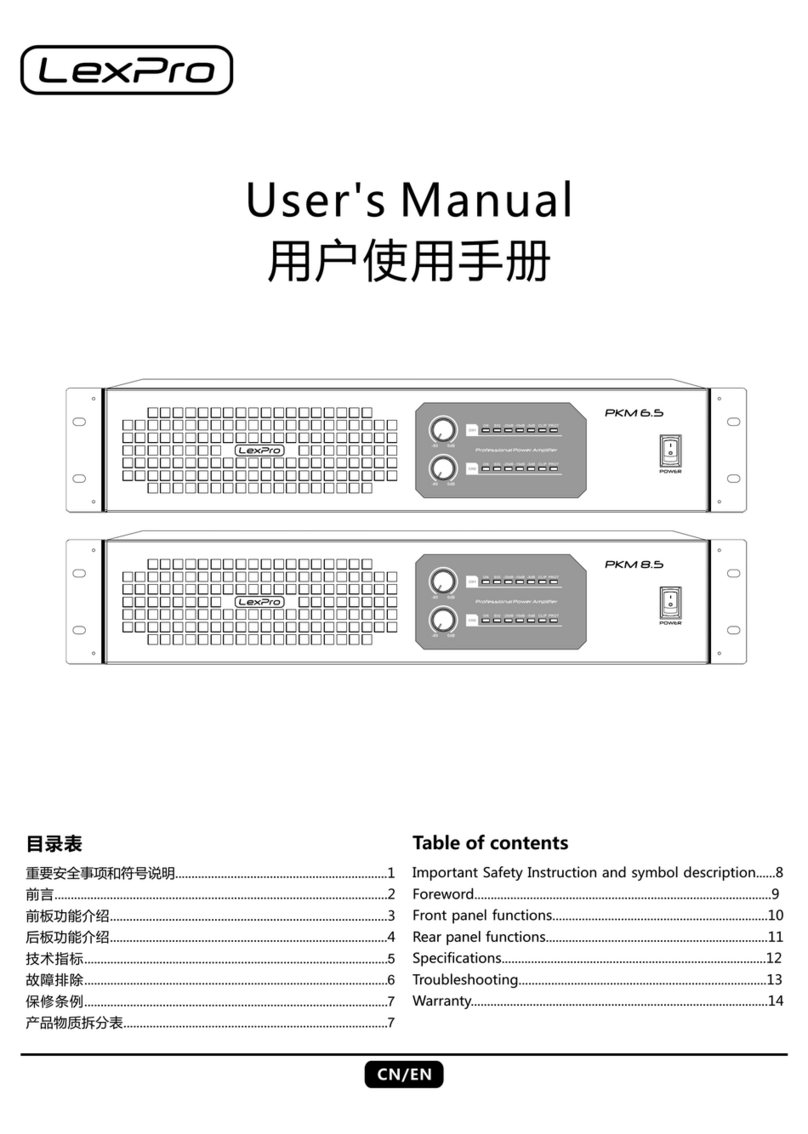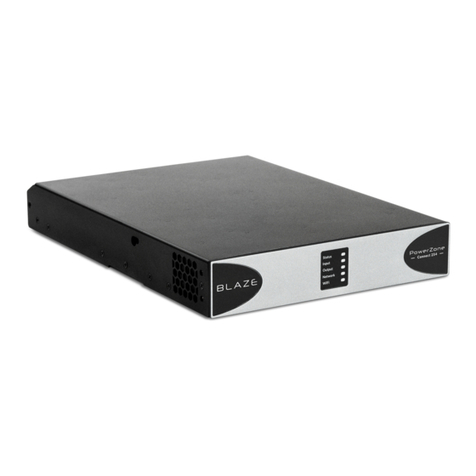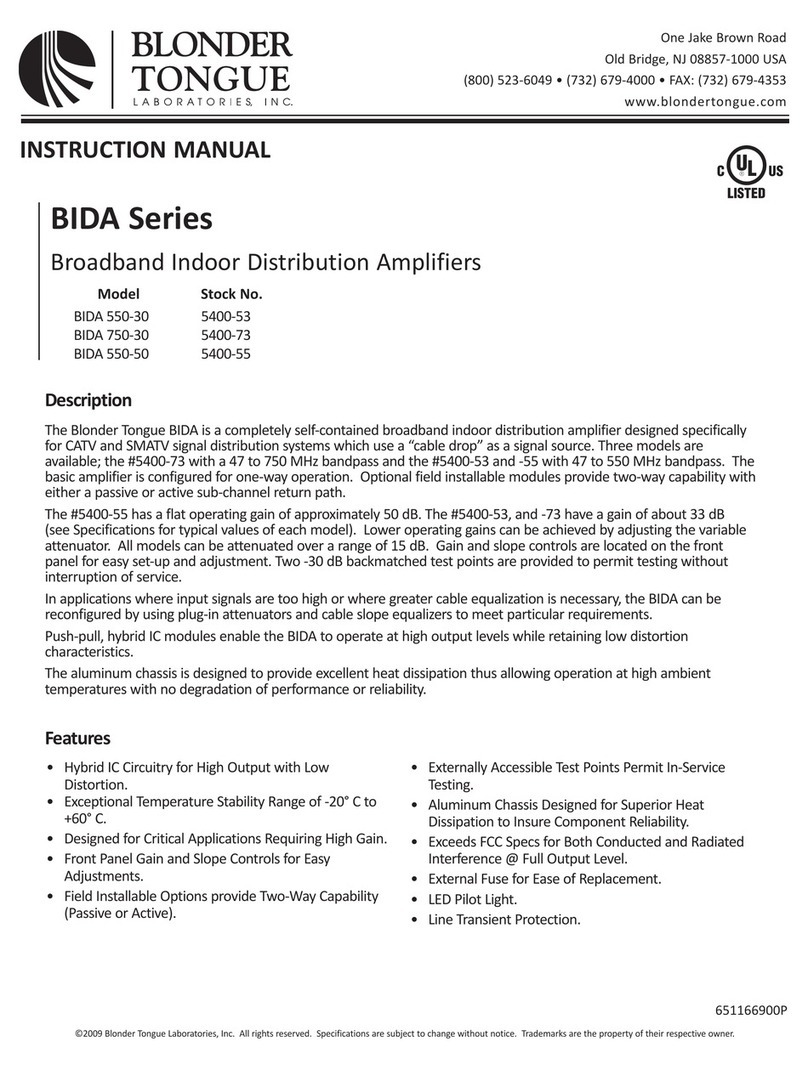GAS Thaedra User manual


lNTRODUCT10N Your THAED RA Servo― !oop Preamplifier is the electronic equivalent
of a magnificent musical instrument. lt contains the most exotic and
elegant circuits ever used for audio‐ frequency signal processing.
丁
hese circuits′ cornpOsed of the finest electronic components ava‖ able′
are surrounded by a rugged′ a‖ ‐
steel chassis.When properly insta‖ ed′
and used onlv vvith the very best associated equipment,M′ e are certain
that your THAED RA wil!give you years of sonic enioyment.
THAED RA is manufactured by the Great American Sound Company′
a group of engineers and craftsmen who rea‖ y care about the θrι of
sound reproduction. We appreciate the vote of confidence that your
selection of THAEDRA has 9市 en us.
TH:S PRODUCT:S WARRANTED UNDER ttHE FOLLOVVING COND:丁 iONS:
1. PRODUCT:S PURCHASED THROUGH AN AUTHOR:ZED G.A.S.CO.′ :NC DEALER.
2.WARRANTY COVERS NORMAL OPERATlNG CONDIT:ONS OF HOME USE.
3. WARRANTY PER:OD BEGINS AS OF DATE OF SALE PROVIDED ttH!S CARD IS FILLED OUtt AND REGISTERED BY THE
AUTHORIZED G.A.S.DEALER WHEREttHE PRODUCT WAS PURCHASED.REGISttRY PER:OD IS 20 DAYS.
4. DEL:BERAttE MiSUSE′ M:SHANDLiNG′ FA:LURE TO REPORT RECE:V:NG DAMAGED MERCHAND:SE,OR UNAUttHORIZED
丁AMPER:NG OR MODiFY!NG TO TH!S MERCHAND:SE AUTOMAT:CALLY VO:DS ALL WARRANT:ES
5. WARRANTY PER:OD FOR ALL G.A.S.CO.′ lNC.FACttORY WiRED PRODUCTS:S5YEARS CO∨ ERING BOttH PARTS AND
LABOR.丁RANSPORTA丁 :ON CHARGES TO AND FROM THE DEALER OR FACTORY ARE EXCLUDED.
6. WARRANttY ON ALL G.A.S.CO.′ INC.PRODUCTS USED iN ANY O丁 HER FASHiON OttHER THAN STATED ABOVE SHALL
REDUCE THE WARRANttY T:ME PER10D AND OttHER COND:T:ONS丁 O NEGOT:A丁 :ONS BETWEEN G.A.S.CO.′ iNC.AND
PROSPECTIVE USER.
7. 丁
H:S WARRANttY SHALL EXTEND TO EACH SUCCESS:VE OWNER PROVIDED G.A.S.CO.′ INC.lS NOT:F:ED BY REG!S‐
丁ERED MA:LW:丁 HIN 20 DAYS OF RESALE BY!N:丁 :AL OR PRESENT OWNER.TH:S NOT!FICAT10N SHALL CONS:ST OF
DATE OF SALE′ AMOUNT′ NAME AND ADDRESS OF NEW OWNER.
8. G.A.S.CO.′ :NC.GUARANTEES THAT ALL G.A.S.CO.′ lNC.PRODUCTS ARE FREE FROM DEFECttS:N MATER:ALS AND/OR
WORKMANSH:P FOR THE REQUiRED WARRANttY PER:OD.OWNERS OF G.A.S.CO.′ :NC.PRODUCTS ARE ENTi丁 LED TO
FREE PER10D:C CHECKS,Att E:THER DEALER OR FACTORY LOCA丁 :ONS,丁 0 :NSURE PRODUCtt PERFORMANCE TO
OR:G:NAL SPECiF!CAT10NS.
G.A.S.CO.′ lNC.WiLL REPAiR OR REPLACE ANY AND ALL DEFECT:VE PARTS Att NO CHARGE′ PROVIDED ALL OTHER
COND:T10NS OFttHE WARRANTY ARE:N ORDER.丁 H:S FREE CHECKOUT SERV:CE:S LiM:TED TO A MAX:MUM OF ONCE
A YEAR′ PER UN:丁 ′
PER CUSTOMER.
9. 丁H:S WARRANTY:S NOT VALID UNLESS ACCOMPANiED BY SALES SL!P VAL:DAT!ON OR PROPERLY STATED INVOICE
(COPY).

¨CH
B﹇
EO Ю
B田中
ABA︐
S
T
S
T
丁HAEDRA has been a long time coming and its concepts are a radical
departure from anything that has existed before Mechanica‖ y and
electrica‖ y,THAEDRA is unique:
From input to output′ 丁HAEDRA is 100 percent fu‖―
complementary′
a concept origina‖ y conceived by G.AS. Cornpanv engineers. As
versat‖ e as the unit is,there are onlyょ И
ノ
O Stages of amp‖ fication. AII
other preamps use three or more stages which add to coloration and
irnpair their ability to achieve a tota‖ y open′ unrestricted sound
q uality.
A‖ d irect(D.C.)cOupled ampl汗 iers suffer from a problem known as
d.c.drift.Accompanying this drift is low frequency modulation noise.
Until noM4 the only way to eliminate drift was to use capacitor coup‖ ng
or gigantic amounts of negative feedback; hardly elegant solutions.
Enter the SERVO.
丁he concept of servo‐ control has found many applications but has never
appeared in audio electronヽ cs.ln ttHAEDRA′ servo amplifiers(co m‐
pletely outside the audio stream)contrOl absolutely a‖ d,c.voltages.
The result is that after the input coupling capacitors in the phono
circuit′ THAEDRA is ′θθ
ρ
θrεθ77D.C ε
ο
%ο た
σ―
―
―
the only
preamplifier in existence vvhich is.
THAEDRA is unique:lt has a truly low― noise Head Amp for use with
lou〆 ‐
output′ moving‐co‖ cartridges lt is a fact that the moving― coil
cartridge traces in the same manner as the head in a disc cutter Their
ability to alrnost exactly reproduce the signal engraved on a vinyl groOve
is unpara‖ eled Unfortunately′ up to nolA/ their very lovげ outputs
required the use of either a step― up transformer or a pre‐ preamp to
achieve the necessary gain The transformers have severe frequency‐
response limitations wh‖ e the ava‖ able pre― preampS suffer from noise
and distortion. On top of this, both require the additional use of a
phono preamp circu仕 ′
σ
dding links in the audio ch9in whiCh further
degrade sound qual:ty.丁 HAEDRA'S sing!e low‐ noise Head Amp circuit
feeds the line‐amplifier directly′ using iust tWO Stages from input to
output.丁 he Head Amp is,of course,servo‐ contro‖ ed
n 一 TI ¨ ・2 ¨¨
¨山無m無
THAEDRA BLOCK DIAGRAM(CHANNEL A ONLY.)

innmediately upon receiving THAEDRA′ inspect the carton for e宙 dence
of mishandling during Shipment.Then,carefu‖ y unpack the preampli―
fier and inspect it for any sign of damage which might have occurred.
Please save the shipping carton and a‖ the associated packing materials
for !ater use,should the occasion arise requiring the subsequent move―
ment of THAEDRA. The shipping materials have been carefu‖ y
designed to transport your ttHAED RA with a minimum of disturbance.
ノ
VO「Er ln the event you discover some damage that has occurred in
shipping,please contact your dealer″ η′ηθσ′σた
め
ス
it must be remembered that ttHAEDRA is a complex, highly
sophisticated example of electronic equipment and some common sense
must be exercised when operating it
丁
he maximum output at clipping is greater than 10 Volts RoM.S.;This
converts to an overload point of 3mV at the input,giving approximately
40dB Of headroon¬ σわ0ソθthe standard operating level tthis corresponds
to an output levelto a power amplfier(Assuming a 1 5V sensitivity for
200 Watts per channel) vvhich Would drive it to approxirnately
2qOθθ″И
ァ
75/
Therefore′ in order to protect your amplifier(s)and Speakers, please
observe the fo‖ovving precautions:
1. Don′ t turn on the unit with the HEAD AMP selected and the
LEVEL up
Turn dourn the LEVEL in between musical or source
se!ections and when turning the poⅥ ′er on or off.
Use shorting iackS in the y77″ Sθ σPHON0 1 or PHON0 2
input iacks
4. THAEDRA runs″ crm/Make sure it has adequate venti!ation.
5. Because it is designed to run warm′ 丁HAEDRA shou!d be
a‖ owed to warm up prior to any critica! listening.
UNttCKINC
O TS:
2.
3.

lN卵へLИ■
ON THAEDRA is designed primarily for mounting on a shelf.An optional′
oiled teak wood cabinet is available、 A′ ith either natural or black‑loned
finish.
Where ttHAEDRA is to be inserted into a panel′ a161/2 inCh by 54/4
inch cutout must be provided. A supporting sheif, or rails must be
used in addition′ as the front panel is 17ο ιdes19ned to support the
massive weight of the unit.
A‖ ow enough space and/or holes for proper ventilation ――
―
Under
no circumstances should the ventilation siots on the top and bottom
of the chassis be blocked.
RACK一 MOUN丁lNG: A black― anodized version of THAEDRA is
ava‖ able from your dealer,on special order,for use1/vith the standard′
19 inch metal rack. Be certain that the insulating plastic bushings
(prOVided 、へ′ith the panel)are used under each mounting screw to
provide electrical isolation of the unit from the metal rack.
CAU丁 10N: Under no circumstances should you mouηt the unit
in a vertical position. 丁his wi‖ cause overheating of
the unit.
With the power svvitch in the(D F F position′ plug the line cord into any
105‑125V′ 50 or 60Hz outlet.Oο 770ι turn on the power s、 、
パtch until
a‖ other connections have been connpleted.
COu/EN:ERICE Otr「 LEIS:
Six convenience outlets have been provided on the rear panel to power
associated components in yOur system. Of these outlets, four are
contro‖ ed by the front‐ pane1 0n/off switch {1000 Watts total)and
are for use vvith tape recorders′ tuners Ond Other accessories.丁 he two
remaining outlets are unswitched and are for use With turntables that
have built‐ in power switches mechanica‖ y linked to disengage their
rubber idler wheels.
NOTE: We σο770r reCOmmend using these outlets with amp‖ fiers.
ARЛ PZ:L LA ε
σf7r70′ be plugged into these outlets. ∪nder no c″ ε″η
7‑
stanε θ
s shou!d a three‐ to― two prong adapter be used to plug the
AMPZILLA line cord into one of ttHAEDRA′ s convenience outlets!
To keep within its warranty provisions,AMPZILLAノ η″Sι be powered
directly from a wall outlet where the third wire can be grounded(No
晰Ound面 Ю
面甲
"d Or re∞ mm d br THAEDR対 .3

Two stereo sets of audio output iackS are provided for connection to
pOllver amplifiers or electronic crossovers. Special audio cables with
9old‐ plated contacts have been supplied for this purpose. The gold‐
plated contacts have the loⅥ ′resistance necessary for a reliable inter―
connection throughout the life of th9 equipmenti additiona‖ y, the
high― quality coaxial cable Ⅵ′ith braided shield guarantees isolation from
external electrostatic radiation.
丁he stereo output iaCkS are labeled MA!N l and 2.丁 hey are both
identical and are tirne‐ delayed by a relay upon turn― on to prevent
voltage surges from exciting a povver amplifier which may already be
turned on.
ヽlake certain that the cable contacts are fu‖ y engaged so that no loss
of circuit ground return exists vvhen the equipment is turned on. A
very loud hurn or buzz 、へ
′i‖ be heard if this condition does occur.
The source irnpedances of theれvo main outputs are each 5 0hms′ lovv
enough to permit the use of shielded′ interconnecting cables up to 1 00
feet in iength. Since its specifications are met driving 600 0hnn loads,
丁
HAED RA is capable of dri宙 ng over 1 00 power amplifiers(each rated
at 75K Ohm input)vvith no increase in distortion.
Two pair of stereo output iackS are provided on the rear panel for
connection to any tape recorder having a minirnum load irnpedance of
5K Ohms or higher.Since the source irnpedance of each is 500(Dhms,
cables up to 100 feet may be used without high‐ frequency attenuation
Unlike the main outputs, the tape‐ output signals are independant of
balance,vo!ume and tone control settings and are at a!evel equal to the
so urce‐ input leve!(Tuner,Aux′ Etc.)
NOttE:The TAPE OUT stereo phone iaCk On the front panel has been
provided for tape‐ copying purposes and may always be ut‖ ized in the
same manner as the rear outputs.{Refer to the paragraph on TAPE
COPYING)

TUNER :NPUT:
This is a high‐ !evel input、 vith a rated sensitivity of O.2 Volt.Although
!abeled TUNER{AM orFM),thisinput may be used with any high‐level
source. The rated input impedance is 36K Ohms with the volume
control at maximum and increases to 53K Ohms when the volume
control is at minimum.丁his condition exists only vvith the push‐ button
source selector in the″ 丁UNER″ position′ otherwise it is zero Ohms
(Shorted).
NOTE: Because of ttHAEDRA′ s unusua!circuitry,the input voltage
hand‖ ng capab‖ ity of a‖ the high‐ level inputs is力 ηFi77ノ よθ/
AUX:L:ARY:NPUTSI
The two stereo input pairs provided′ !abeled AUX l and AUX 2′ are
identica! in operation and sensitivity to the TLJNER input described
above.They can be used with any auxiliary equipment having adequate
outputs such as tape recorders′ tu ners,television receivers′ etc.
丁APE :NPUTS: :
丁hree stereo pairs are pro宙 ded′ !abeled TAPE l and ttAPE 2(Located
on the rear panel),and ttAPE IN(located On the front panel).These
inputs, having identical irnpedances and sensitivities as the TUNER
input,are for connection to tape‐ recorder line outputs.
PHONO:NPUttS:
Two sets of phono inputs are provided,one,labeled MAG PHONO is
for use with conventional magnetic phonograph cartridges, and one
!abeled HEAD AMP is for use with low― ootput― level moving‐ co‖
cartridges,The kind of phonograph cartridge used determines which of
the two phono inputs Should be connected to your tone‐ arm cables.
MAGNEttiC PHONO:A‖ conventional magnetic cartridges(and othel
types which require RIAA playback equalization but llvhich do not
require input sensit市 ities below l.6m∨ )may be used with this input.
丁
he rated input impedance is 47K Ohms{100 pF shunt capacitance)
vvhich is standard for magnetic phonograph cartridges. Overload
capabi!ity is l10mV@lkHz which will accommodate even those
cartridges considered to be
High‐ output″ types.

We‖―
shieided cab:e is recommended for connecting to the cartridge
and is usua‖ y supplied as part of the turntable or changer. Where
longer distances are desired for this connection,it is not recommended
the phono cab!es exceed 5 feet,otherwise audible degradation of high
frequencies might be encountered.Special care must be taken that a‖
connections are tight and secure.
Ordinari:y′ an additional grounding wire is provided with the turntable
which should be connected to the grounding post located between the
phono inputs on the rear panel.:n some systems′ it might be found that
this connection creates hum. !n this case′ no ground connection should
be made.. Be careful to keep a‖ large transformers(such as found in
povver amplifiers)avvay frOm the phono cartridge to prevent magneti‐
ca‖ y‐ induced hum.
HEAD AMP: This input is for use with low‐ output mo宙 ng―coil
cartridges.THAEDRA has speciai circuits with 67 microvolt sensitivity
(OVerload: 4.7mV}which Wi!!accommodate these very low‐ output
cartridges without the need for transformers or pre― preannplifiers.The
input impedance is 600 0hms・ (with O.luF shunt capacitance),v〆 hich
provides negligible signal ioss and frequency response rnodification vvith
moving‐coil type cartridges.
Although cab!es up to 15 feet mav be used without affecting the
cartridge frequency respOnse,special care must be taken to prevent hum
pickup in the cables. They must not on:y be we‖ ―
shielded′ but the
cables must be kept away from anv AC power transformers.lf any hum
is heard′ try moving the cables to some other position′ routing it as far
as possible from any potential magnetic fields.The two left and right
channels should be kept together and tvvisted a few times. :f hum still
persistsr again be certain that″ ο!arge power transformers are near the
:eft side of THAEDRA.
SPECiAL NOTES ON HUM REDUC丁 iON
Probably the most frustrating problem vvith lovv‐ output moving‐ coil
cartridges is hum. A great percentage of the time it is the result of
irnproper insta‖ ation and lack of care when orienting components.
Unfortunateiy′ either by poor design or the very nature of the com―
ponent,some components are more prone to hum than others,and 770
cable made is entirely immune to radiated magnetic f!ux(hum).it
fo‖ ows then′ that σ〃cables in the system must be oriented for the
lowest level of hum.
The connecting cab:es from the turntable wi‖ pick up far″ 0′θhurn
than any other sourceo These cab:es must be oriented for maxirnum
hum cance‖ ation.И ノ7 vvires carrying AC power should be located as far
avvay from the turntable and pre― amp input as is physica‖ y possible.
さnder 17ο εirc″隔 じancθs shou!d you ground the turntable or grounding
pOst tO a water pipe or other such ground.(Dnly オカ′ο
J9/7 the ρ
O、νθ
′
′
η
p/iFiar shou!d your system be grounded to earth. lf your power
ampiifier does not have a third‐ wire ground′ we advise you have a
qualified technician insta‖ one as a safety feature.
Aithough sometimes awkward′ rotating the power amplifier at right
angles to the preamp‖ fier llvi‖ alter the radiation field from its pO、 ver
transformer. Placing metal sheets between units wi‖ not aid in the
reduction of hum because the magnetic flux fie!d will extend around
the shie!d.
Hum can aiso be introduced by a poor cable connector contact with the
outer grounding she‖ of the plug.Make sure that the outer she‖ s on the
RCA phono p!ugs are squeezed together enough to provide an
absolute!y so!id ground connection.Try rotating the plugs to obtain the
best possible ground.

When first operating THAEDRA,set the contro:s as fo‖ ows:
MODE:
TAPE MON:丁 OR:
LOW FILTER:
TAPE COPY:
BASS&TREBLE:
BALANCE:
LEVEL:
SELECTO R:
Stereo
Out
Off
Any position
F lat{M id‐position)
M id‐ position
Minimum(Counter‐ c!ockwise)
Des:red source
Press the power switch oni the p‖ ot iight shou!d novv g!ow. lncrease
the :evei control to the desired loudness, For deta‖ ed operation of
each control′ read the fo‖ovving:
POWER SWiTCH:
This push‐ push svvitch turns on THAEDRA simuitaneous:y vvith any
equipment that has been plugged into the rear‐ pane!switched conven‐
ience outlets.A tirne‐ delay relay w‖ l cause a wait of approxirnate:y10
seconds before pOwer is applied to the interna: circu its. This feature
prevents turn‐on voltage irnpu:ses from reaching the power amp!ifier.
Power turn‐off is instantaneous when the off button is pressed.You
should a:ways wait at least 6 seconds before turning the unit on again
in order to perrnit relay recyc!ing.Prior to turning ttHAED RA off′ it
is advisabie to turn down the!evel from very !oud settings.
LEVEL CONTROL:
This contro:s the output :oudness of both channe:s sirnultaneous:y.
:ts stepped′ discrete‐ resistor construction maintains inter― channel ba!‐
ance within O.5dB at a‖ settings. it has no effect on the signal at the
TAPE OUTPUT iackS.
BALANCE CONTROL:
This control alters the ratio betvveen the left and right channels. !t is
usefu! in achieving a balanced sound leve! where the speakers are at
different distances from the:istener or they are of dissirni:ar efficiencies.
丁
he exact center of the contro! is detented.

BASS CONTROLS:
These controls alter the low‐frequency respOnse of the two channels
below 600Hz. The precise a!terations can be seen in Figure 3. :ts
stepped′ d iscrete‐ resistor construction insures a channel‐ to‐ channe:
accuracy within ldB throughout its range, When used in coniunction
uvith the low f‖ ter, a wide range of corrective alteration is possible,
partia‖ y negating deficiencies in speakers and source material.
TREBLE CONTROLS:
These controls alter the high― frequency response of the two channels
above 1800 Hz. The precise alterations can be seen in Figure 3.丁 hey
have the same stepped′ d iscrete‐ resistor construction as the BASS
contro:s. The boost positiOns incorporate supersonic f‖ tering in a
Gaussian frequency distribution. The resuitant smooth curve causes a
minirnum phase distortion of high frequencies and provides the!east‐
ObieCtiOnable interference from noise.
LOW FILTER:
Four positions of !ow‐frequency attenuation are provided by this
contro!. Attenuation occurs at the rate (slope)Of 12dB per octave
below the se:ectable turnover frequencies of 1 0,20,30 or 50Hz. :t is
useful where your turntable and/or recOrd has runnb!e interference,
Although the rumble frequency might be belovv audib‖ ity, and thus
not heard directiv′ its effect can sometirnes be heard as intermodu:ation
distortion occuring in either the amp!ifier or speaker. :ts use might
thus c!ean up the sound ctarity in the mid or high=frequency range.
The use of the iow fi!ter in coniunctiOn with bass boost extends the
f!exib‖ ity of the avai!ab!e bass connpensation.
MODE SWiTCH:
丁
his switch determines hov′ the source inputs are channeled to the
output iackS. :t functions as fo‖ows:
A. The left channel is connected to bο よ″outputs.
B. The right channel is connected toわ οオカ
outputs.
A+B. . . . . ... BOth Channe:s are combined and the mixed{Mono)
resultant is connected to bOιみoutputs.
STEREO. . . . . 丁
his,the normal position,connects the left input to
the:eft output and the right input to the right output.
REV.........・ ThiS position connects the:eft input to the opposite
(right)output and the right input to the opposite
(left)Outputi simp!y reversing the STE R EO mode
descr:bed above.
TAPE MONITOR:
The normal position for this contro: is either one of the two labeled
OUT, When at OtJT, the signa:s selected by the source push‐ buttons
mav be heard. When you 、vish to monitor any of the tape recorders
connected to the tape inputs of THAEDRA, simp:y turn the control
to either of the three positions corresponding to the appropriate
recorder.
While in the ttAPE l′ 丁APE 2,or ttAPE FRONT position,the signal
selected by the push―button source selector wi‖ be disconnected and
the signal from the selected tape recorder's output wili be substituted.
The origina‖y selected source signal wi!!′ however, continue plaving
into the TAPE OUT iaCkS.Thus′ by rapidly switching between the
OUtt position and the desired TAPE source, the tvvo signa:s can be
connpared whi:e recording. Of course,this direct monitoring can on!y
be achieved with recorders having adequate head provislons for this
purpose.
TAPE COPY:
This svvitch makes possib:e′ vvithout resorting to externa!′patch cords″ ′
extremely versat‖ e interconnections(for cOpying or editing purposes)
betⅥ″een any of the three tape recorders connected to THAEDRA. it
functions as fo‖ ows:
1‐ 2....… …
・
TAPE l力 ρ
″
おare connected to TAPE 2 0″ ゅ
″
な
(ie:The signals from tape recorder l are fed outゎ
tape recorder 2.
1‐ F. . . . . ・
・
・
・
TAPE l inputs are connected to the front‐ panel TAPE
OUT iaCk,
2‐ 1. . . . . . . . ・
TAPE 2 inputs are connected to TAPE l outputs.
2‐ F. . . . . ・
・
・
・
¬
「
APE 2 inputs are connected to the front― panel¬
「APE
OUT iaCk.
F‑1. . . . .. . .
・
The front‐ pane! 丁APE :N iack iS COnnected to the
TAPE l outputs.
F‐ 2. ... .・ ・・
・
The front‐ panel TAPE IN iack iS COnnected to the
TAPE 2 outputs.

NO‐
「E: lt is irnpossible to record the signal from the push― button
source seiector onto the recorder corresponding to the second
digit of the TAPE COPY switch positlon.For example′ if the
cOpy switch is in position l‐ 2,the tape recorder connected to
the TAPE 2 iacks Will ο77夕 reCeiVe a signal from tape recorder
l. lt wi‖ 770′ reCeive the signal selected by the source‐ selector
push‐ buttons(PHONE′ TUNER′ AUX′ etc.).丁o record the
source― se!ected s19na!s onto recorder 2, the ttAPE COPY
switch must be in any position other than l‑2 and F‐ 2.
Figure l THAEDRA SER∨ 0‑L00P TONE CONTROL CHARACTER:STiCS
HEADPHONES:
Either of the two HEADPHONE iacks aCCepts phOnes with impedances
of 100 0hms or more.The upper iaCk ieaves the power amp!rier
connected′ whi!e the iower iaCk automatically disconnects the power
amplifier for headphones‐ oniv listening.
Figure 2 THAEDRA LOW‐ F:LTER CHARACTERiST!CS

H与ネ
MR
Gain ・
input irnpedance
:nput sensitivity
:nput over!oad
Equivalent input noise
Output impedance
PHON0 2{MAG}:
Gain
!nput irnpedance
:nput sensitivity
:nput over!oad
Equiva!ent input noise
Output impedance
H:GH LEVEL iNPUttS:
Gain
input irnpedance
lnput sensitivity
input overioad
Equiva!ent input noise
OUTPUttS:
MAIN output impedance
TAPE output impedance
Output load irnpedance
70d B @ 1000Hz
Approximate!y600 0hms(0.luF shunt)
Approximately 67 microvolts@lKHz
Approximate!y4.7m‖ 1市olts@lKHz
Less than O.l microvolt 20‐ 20KHz
Less than O.04 microvolt 400‐ 20KHz
Approximately 500 0hms
42dB @ 1000Hz
47KOhms{100pF shunt)
1.6 mil!市olts@lKHz
Approximately l1 0 millivolts@lKHz
Less than O.6 microvolt 20‐ 20KHz
Less than O.25 microvolt 400‐ 20KHz
Approximately 500 0hms
20dB@ 1000Hz
Level control dё pendant
53K Ohms@full C.C.W.
36K Ohms @fu!IC.W.
200 millivo!ts@l KHz
Essentia‖ y infinite
Less than 5 nlicrovolts 20‑20KHz
5 0hms Effective
Source lmpedance
Not less than 100 0hms for MA:N
Not!ess than 10K Ohms for TAPE
ALL SPEC:F:CA丁 :ONS ARE DERiVED AT 2 VOLTS OUTPUT!NTO A
600 0HM LOAD(Except ttAPE which is driven into a 10K Ohm load)
Cコ │日
THE GREAT AMERiCAN SOUND CO.:NC.
20940 Lassen StreetOChatsworth′ Ca‖ fornia 91311
=卜▲ED■▲
Table of contents
Other GAS Amplifier manuals
